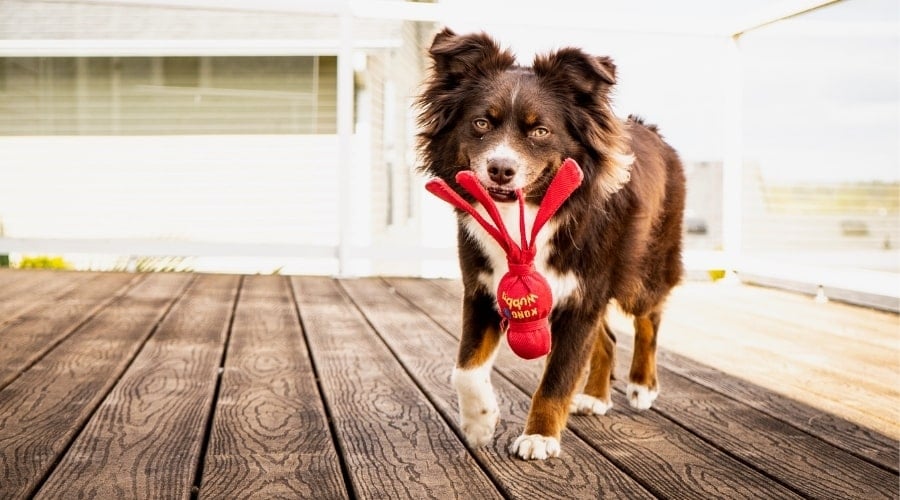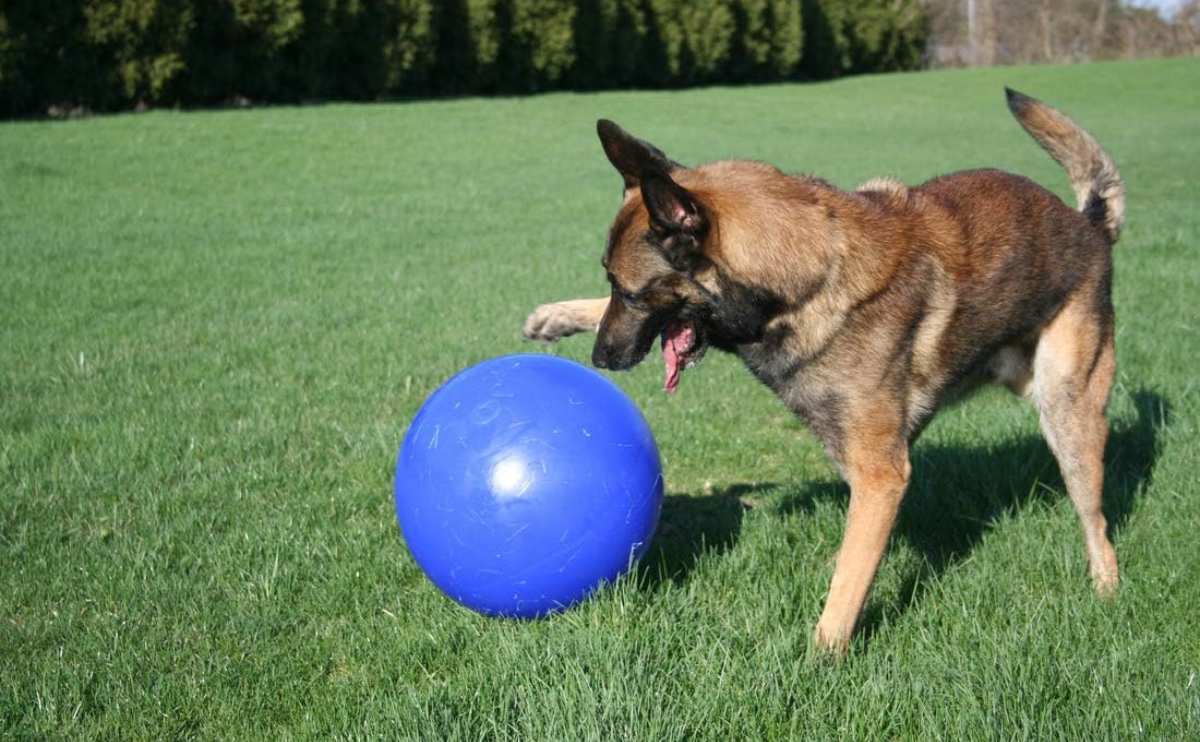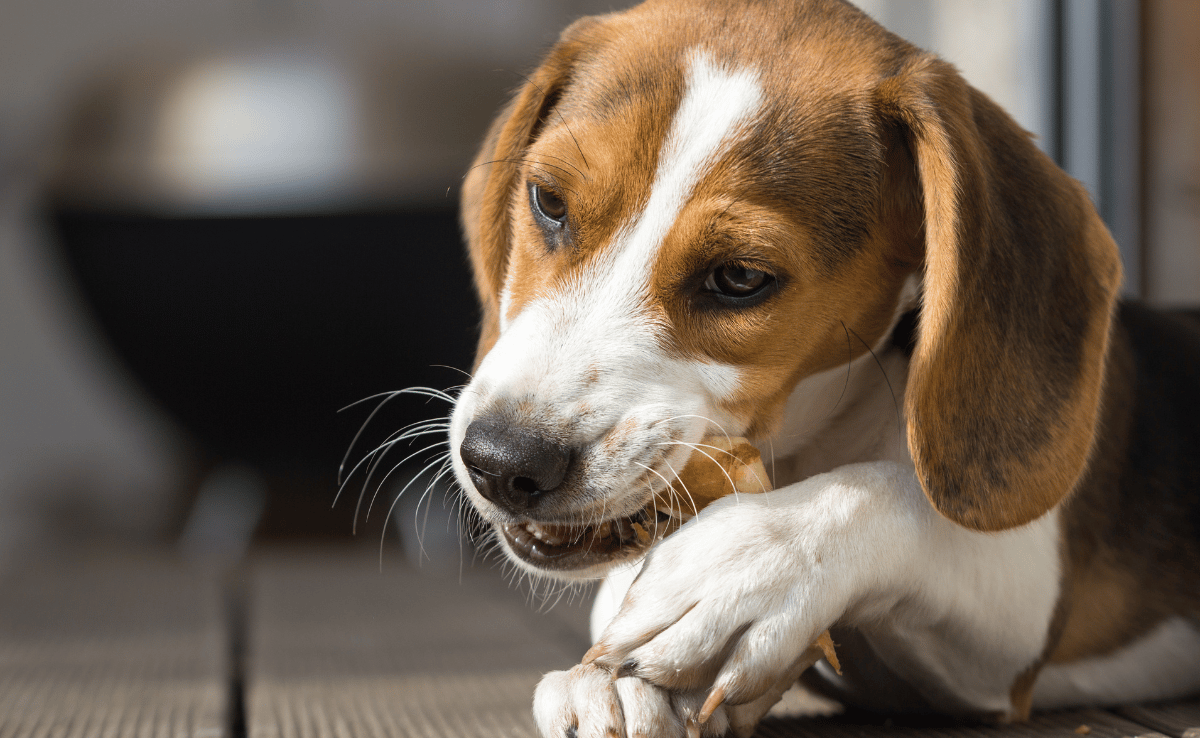When you purchase through links on our site, we may earn a commission. Here’s how it works.
It starts with an innocent chew. Your dog gnaws away happily at a toy you bought, thinking it was safe. Then you hear the sound. A crack. A chunk. Panic.
Table of Contents
Suddenly, you’re rushing to the vet.
Nylabone has long been a household name among dog owners. However, the question that gnaws at many pet parents is whether it is safe. Or are we trading playtime for potential danger?

What Is A Nylabone?
Nylabone isn’t just a product—it’s a brand that became a category.
The original Nylabone Company, based in the U.S., created the first nylon chew toy for dogs back in 1955. Since then, the name “Nylabone” has evolved beyond the brand itself.
Much like Kleenex is used for facial tissues or Q-tip for cotton swabs, “nylabone” has become a catch-all term for hard, non-edible plastic chew toys—even when they’re made by someone else.
Today, Nylabone offers a wide range of products including:
- Non-edible chew toys (their original claim to fame)
- Edible chews with flavors and limited digestibility
- Dental chews designed to reduce plaque
- Puppy-safe options for softer gums
- Interactive toys beyond the classic bone shape
But Nylabone isn’t alone in this space. Competing brands like Benebone, Petstages, and Pet Qwerks also manufacture nylon-based chews with similar designs. So, while Nylabone started it, it’s far from the only player—and the safety concerns we’re talking about often apply across the board.
What Are Nylabones Made Of?
Most Nylabones are crafted from durable nylon, a synthetic polymer engineered to withstand relentless chewing. They’re designed to last, but that same durability may come at a cost.
According to the American Veterinary Dental College, toys that are too hard—especially those you can’t indent with your thumbnail—pose a risk for dental fractures. Nylon, in particular, has been associated with cracked molars in dogs that chew forcefully from top to bottom.
Can Dogs Eat Nylabones?
While many Nylabone products are labeled “non-edible,” pet owners often miss or misunderstand what that actually means. Here’s what you need to consider:
- Tooth fractures: Hard nylon can break molars or wear down enamel, especially in strong-jawed breeds.
- Swallowed pieces: Over time, sharp fragments may break off. These can cause choking, digestive blockages, or intestinal tears.
- Choking hazard: If the chew becomes small enough to fit in your dog’s mouth, it can become an obstruction.
The Hidden Dangers: What You’re Not Told on the Label
Pet owners need to be aware that nylon is a type of plastic; thus, there are health and environmental concerns pet parents should be mindful of:
- Harmful chemical: Nylon production involves various chemicals that could harm your pup’s health, including BPA, BPF, phthalates, parabens, PFAS, and more. For this reason, The National Canine Cancer Foundation says plastic toys are unsafe for dogs.
- Microplastics: As nylon degrades, it can release microscopic fibers. These fibers are often invisible to the naked eye and can make their way into your dog’s stomach by chewing on the toy. Studies suggest microplastics pose various health risks, including inflammation, DNA damage, and chronic diseases.
What Nylabone Does Say
The Nylabone brand claims its products are free from BPA and phthalates—and that they meet government safety standards; however, there is no public confirmation regarding PFAS (per- and polyfluoroalkyl substances), which are increasingly under scrutiny for their potential long-term health impacts.
With no direct statement on PFAS and the use of proprietary nylon blends, the complete chemical profile remains unclear.
Nylabone’s Official Safety Guidelines (Often Overlooked)
Nylabone provides a chew style guide and usage warnings via its official product page. Still, these often go unnoticed or are misunderstood.
Here are the highlights:
- Select the correct size and type for your dog’s age, weight, and chew intensity.
- Choose chews for your largest, strongest chewer in multi-dog households.
- Discard the chew when it becomes small or develops sharp edges.
- Always supervise your dog while they chew.
- Never allow chewing from top to bottom (a major cause of cracked molars).
You can find similar safety guidelines for nylabone-like products via each company’s website (e.g., Benebone)
Safer Alternatives Worth Considering
If you’re concerned about potential risks, consider these alternatives:
- Bully sticks: Safer for teeth but short-lived.
- Cellulose-based chew (e.g., BetterBone): Safe to ingest and available in various densities to suit different chew styles.
- Deer or elk antlers: Great for gnawing, but they also risk cracking teeth.
- Himalayan yak chews: Long-lasting, digestible, and rich in natural flavor.
- Rubber toys (e.g., Kong, GoughNuts): More forgiving on teeth, harder to break apart.
Check out our review of the best long-lasting (rawhide-free) chew toys for more details.
How To Tell If A Chew Toy Is Safe For Your Dog
Use this quick checklist before handing over any chew toy:
- Can you indent it with your thumbnail?
- Is it larger than your dog’s mouth (to not be swallowed whole)?
- Does your dog chew gently?
- Does your dog crunch? (Grinders are safer with hard chews)
- Is the toy whole without signs of damage or parts breaking off?
- Are you supervising every session?
If you answered “no” to any of these, it may be time to reconsider or replace the toy.
So, Are Nylabones Safe For Dogs?
The short answer? It depends on your dog—and your vigilance. If misused, even the most reputable chew toy can lead to injury, vet visits, or worse.
The Bottom Line: Know Your Dog, Know Your Risk
No chew toy is entirely risk-free. Even rubber and rawhide alternatives carry their own concerns, from bacterial contamination to digestive issues.
But the difference between a safe play session and an emergency vet bill often comes down to one thing: your attention.
Whether it’s Nylabone or something softer, always consider your dog’s chew habits, jaw strength, and health history. Chewing is natural—but safety should be intentional.
Help! My Dog Ate Part Of A Nylabone! What Do I Do?
If your dog has eaten a large piece of Nylabone, you need to go to the vet immediately. The components of these bones are challenging for your dog to digest and can cause many problems, not only to your pup’s health but also to your bank account.
Frequently Asked Questions
Choosing the right chew toy can feel overwhelming. There’s no one-size-fits-all regarding safety, durability, and what your dog will enjoy.
These frequently asked questions tackle the most common concerns of pet parents like you—so you can make informed decisions without second-guessing every bite. Don’t see yours? Ask us in the comments!
Are Nylabones Toxic To Dogs?
Nylabone states that its products are made with non-toxic, BPA-free, and phthalate-free materials and are tested to meet government safety standards. However, specific chemical disclosures are limited, and there’s no public statement regarding the presence or absence of PFAS.
Always supervise use and consult your vet if you have safety concerns.
Can Nylabones Damage My Dog’s Teeth?
Yes. If your dog is a power chewer, Nylabones may lead to cracked teeth or enamel wear, especially if your dog chews aggressively from top to bottom. Follow the “thumbnail test”—if you can’t dent the toy with your nail, it may be too hard for safe chewing.
What Should I Do If My Dog Swallows Part Of A Nylabone?
Remove the toy immediately and monitor your dog for symptoms like vomiting, lethargy, or signs of blockage. Even though small nylon fragments often pass, larger or jagged pieces can cause internal injury.
Call your vet right away if you suspect your dog ingested a portion.
How Long Should A Nylabone Last?
That depends on your dog’s size and chew style. Some dogs lose interest quickly; others destroy the toy in days.
When Should I Replace My Dog’s Nylabone?
You should replace your dog’s non-edible Nylabone chew when the knuckle ends wear down or if it becomes too small to chew safely (if it is so small that your pup could swallow it, throw it out).
Are There Safer Alternatives To Nylabones?
Yes. Rubber chew toys and digestible options like Himalayan yak chews can be safer, depending on your dog’s chewing habits. But even the safest toy requires supervision and the right size match for your dog.
Still Chewing On It? Here’s Where To Go Next
Seeking an alternative? Explore our guide to the best indestructible dog toys for options tailored to aggressive chewers, soft-mouthed pups, and everything in between. If you have a heavy chewer in your house, we encourage you to also check out our heavy chewer dog subscription box reviews.
Why Trust Canine Journal?
Michelle has been a dog owner her entire life and is currently a co-parent to two rescue pups, Barley and Lily. Michelle specializes in pet insurance for dogs. She’s part of a team of dog specialists at Canine Journal who have over a decade of experience researching, testing, and writing about everything you need to know to keep your pup healthy and happy.



